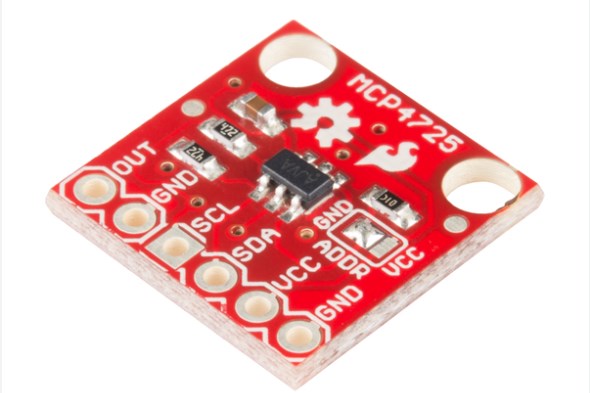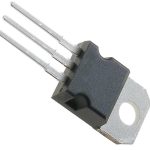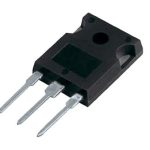Discover the power and versatility of the MCP4725 Digital-to-Analog Converter (DAC) in this comprehensive guide. We delve into the intricate workings of this popular I2C DAC chip, unveiling its features, applications, and benefits. Join us as we explore how the MCP4725 harnesses digital signals to generate accurate analog voltage outputs, allowing for precise control in various electronic systems.
What is MCP4725?
MCP4725 is a 12-bit digital-to-analog converter (DAC) chip developed by Microchip Technology. It is capable of converting digital values into corresponding analog voltage outputs, making it a useful component in various electronic applications.
Features
- Resolution: It offers a resolution of 12 bits, which means it can produce 4096 different analog voltage levels.
- Voltage Range: The MCP4725 can generate analog voltage outputs ranging from 0V to Vref (the reference voltage), which can be configured to either 2.048V or 4.096V.
- I2C Interface: It utilizes the I2C communication protocol, allowing easy interfacing with microcontrollers and other digital devices.
- Non-Volatile Memory: The chip has non-volatile memory that can store the last DAC value, making it retain the output even after power-off.
- Fast Settling Time: It has a fast settling time of 6µs, ensuring quick response in changing voltage requirements.
- Low Power Consumption: The MCP4725 operates at low power, making it ideal for battery-powered applications.
- Address Pins: Multiple MCP4725 devices can be connected on the same I2C bus by configuring unique hardware address pins.
Specs
| Specification | Value |
| Max. drain current | 41 A continuous DC, 160 A pulsed |
| Digital interface | Standard (100 kbps) Fast (400 kbps) High-Speed (3.4 Mbps) |
| Output range | Rail-to-rail |
| Settling Time | 6 μs |
| Voltage reference | Provided externally |
| Differential nonlinearity | No more than 0.2 of LSB |
| Operating temperature | -55 °C to 125 °C |
| Packages | DFN, SOT-23/SOT-23-6 |
| EEPROM register size | 14 bits (2 for configuration, 12 for input) |
Advantages and Disadvantages
Advantages:
- High resolution and accuracy in converting digital values to analog voltages.
- Easy integration with microcontrollers and other digital devices due to the I2C interface.
- Non-volatile memory ensures the output remains stable even after power cycles.
- Fast response time allows for quick and precise adjustments to analog voltages.
- Low power consumption makes it suitable for portable and energy-efficient devices.
Disadvantages:
- Limited voltage range options (2.048V or 4.096V), which may not fulfill certain design requirements.
- Lack of other communication protocols like SPI, limiting its compatibility with devices that use alternative interfaces.
Pin out

Datasheet
Download the MCP4725 datasheet here.
Block Diagram

Applications
1. Audio Equipment
MCP4725 can be used in audio devices to generate analog voltage outputs for digital-to-analog conversion, such as in amplifiers, mixers, or musical instruments.
2. Industrial Control Systems
It can be employed in industrial automation systems for controlling and monitoring analog devices, providing accurate voltage control and signal generation.
3. Test and Measurement Instruments
MCP4725 is useful in various test and measurement applications where precise analog voltages are required for calibration, signal generation, or stimulus purposes.
4. Robotic Systems
It can also find applications in robotics, where analog voltage outputs may be required for motor control, sensor interfacing, or actuator positioning.
5. IoT Devices
MCP4725’s low power consumption makes it suitable for Internet of Things (IoT) devices that require analog voltage outputs while operating on limited power sources.
Alternative
One alternative to MCP4725 is the ADS1015 ADC (Analog-to-Digital Converter) chip developed by Texas Instruments. While MCP4725 converts digital values into analog voltages, the ADS1015 does the opposite, i.e., converting analog signals into digital values. The ADS1015 is a 12-bit ADC with an I2C interface and can be used in applications where digital values need to be derived from analog signals, such as sensor readings.
FAQs
What is I2C DAC?
I2C DAC stands for Inter-Integrated Circuit Digital-to-Analog Converter. It is a type of digital-to-analog converter (DAC) that utilizes the I2C communication protocol to receive digital instructions and convert them into analog voltage signals. The I2C DAC provides a convenient and efficient way of controlling analog outputs or voltage levels using digital devices.
What is the voltage of MCP4725?
The MCP4725 is a popular I2C DAC chip produced by Microchip Technology. It operates at a supply voltage range of 2.7V to 5.5V. This wide voltage range makes it compatible with a wide variety of electronic systems, ranging from low-power applications to more demanding scenarios.
What is the current output of MCP4725?
The MCP4725 is capable of providing a current output. It is designed to deliver a maximum output current of 25 mA, making it suitable for driving various loads such as resistors, transducers, or other analog devices requiring current control.
What is the address of the MCP4725?
The MCP4725 has a programmable device address. The device address is set by the manufacturer and cannot be changed by the user. For the MCP4725, the device address is binary ‘1100000’, which corresponds to the hexadecimal address 0x60. This address is used to communicate with the MCP4725 over the I2C bus.
What is the I2C address of MCP4725?
The I2C address of the MCP4725 is 0x60. This 7-bit address is used to identify the device on the I2C bus and establish communication with it. When transmitting data to or reading data from the MCP4725, this address is used as part of the communication protocol to ensure the correct device is being accessed.
Conclusion
Equipped with a newfound understanding of the MCP4725 DAC, you are now ready to leverage its capabilities for your own projects. Whether you’re designing audio devices, sensor interfaces, or voltage-controlled systems, the MCP4725 opens up a world of possibilities. With its ease of use, programmability, and wide voltage range, this I2C DAC is a valuable tool for achieving precise analog outputs in the digital realm.




